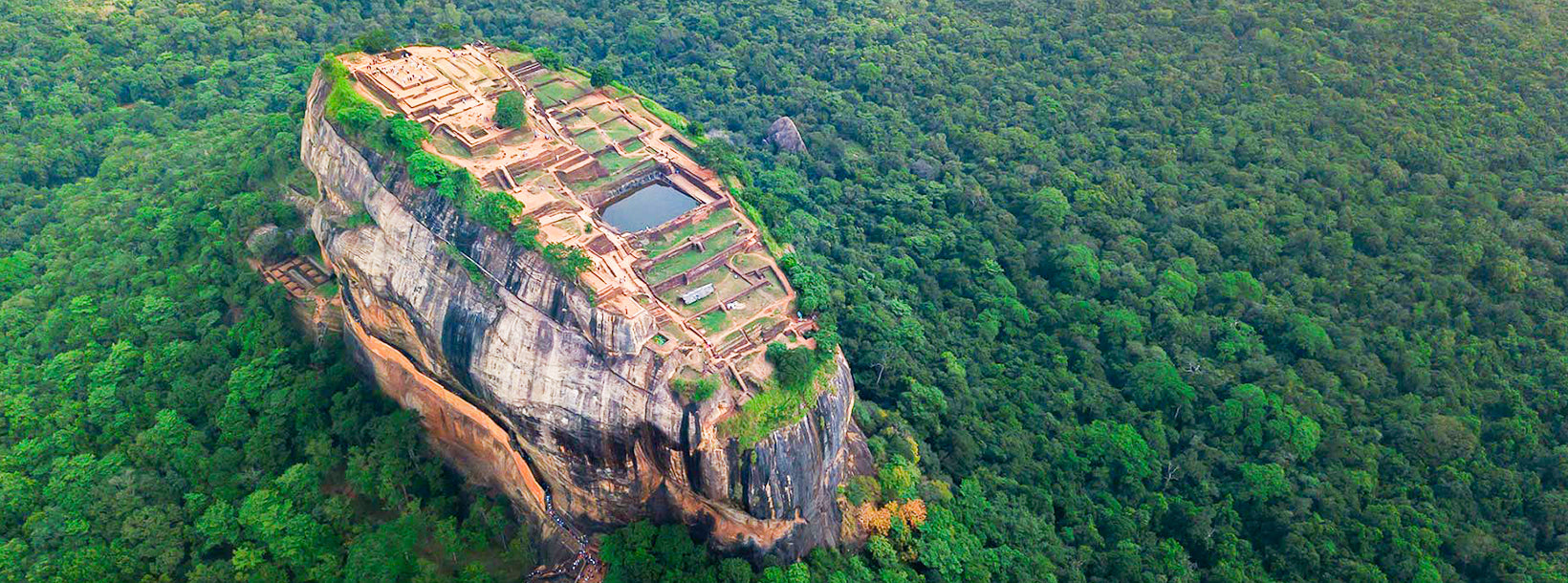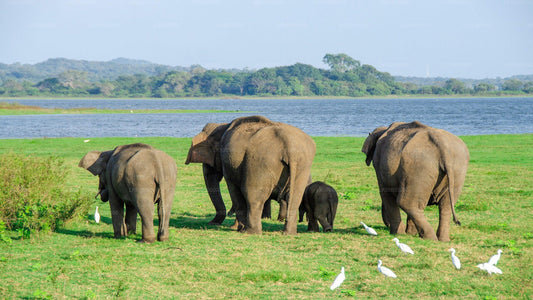
Sigiriya Rock Fortress
Sigiriya, a UNESCO World Heritage Site in Sri Lanka, is an ancient rock fortress and palace with stunning frescoes and extensive gardens. Rising dramatically from the plains, it's a testament to the island's rich history and architectural ingenuity. Explore the enchanting beauty and cultural significance of Sigiriya.
Sigiriya Rock Fortress
According to inscriptions found in the caves which honeycomb the base of the rock fortress, Sigiriya served as a place of religious retreat as far back as the third century BC, when Buddhist monks established refuge in the locale. It wasn’t until the fifth century AD, however, that Sigiriya rose briefly to supremacy in Sri Lanka, following the power struggle which succeeded the reign of Dhatusena (455-473) of Anuradhapura. King Dhatusena had two sons, Mogallana, by one of the most desired and finest of his queens, and Kassapa, by a less significant consort. Upon hearing that Mogallana had been declared heir to the throne, Kassapa rebelled, driving Mogallana into exile in India and imprisoning his father, King Dhatusena. The legend of Dhatusena’s subsequent demise offers an enlightening illustration of the importance given to water in early Sinhalese civilization.
Threatened with death if he refused to reveal the whereabouts of the state treasure, Dhatusena agreed to show his errant son its location if he was permitted to bathe one final time in the great Kalawewa Tank, of which the construction he had overseen. Standing within the tank, Dhatusena poured its water through his hands and told Kassapa that this alone was his treasure. Kassapa, none too impressed, had his father walled up in a chamber and left him to die. Mogallana, meanwhile, vowed to return from India and reclaim his inheritance. Kassapa, making preparations for the expected invasion, constructed a new dwelling on top of the 200m high Sigiriya rock – a combination of pleasure palace and indestructible fortress, which Kassapa intended would emulate the legendary abode of Kubera, the god of wealth, while a new city was established around its base. According to folklore, the entire fortress was built in just seven years, from 477 to 485 AD.
The long-awaited invasion finally materialized in 491, Mogallana having raised an army of Tamil mercenaries to fight his cause. Despite the benefits of his indestructible fortress, Kassapa, in an act of fatalistic bravado, descended from his rocky abode and rode boldly out on an elephant at the head of his troops to meet the attackers on the plains below. Unfortunately for Kassapa, his elephant took fright and bolted leading the battle. His troops, thinking he was retreating, fell back and left him to face off the battle. Facing capture and defeat, Kassapa killed himself. Following Mogallana’s quest, Sigiriya was handed over to the Buddhist monks, after which its caves once again became home to religious ascetics seeking peace and solitude. The site was finally abandoned in 1155, after which it remained largely forgotten, except for brief periods of military use by the Kingdom of Kandy in the sixteenth and seventeenth centuries, until being rediscovered by the British in 1828.
The Boulder Gardens and Terrace Gardens
Beyond the Water Gardens the main path begins to scale up through the unusual Boulder Gardens, constructed out of the huge boulders which lie tumbled around the foot of the rock, and offering a naturalistic wildness as opposed to the neat symmetries of the water gardens. Many of the boulders are notched with lines of fissures they look rather like rock-carved steps, but in fact they were used as footings to support the brick walls or timber frames of the numerous buildings a which were built against or on top of the boulders – complex to imagine now, although it must originally have made an extremely picturesque sight.
The gardens were also the centre of Sigiriya’s monastic activity before and after Kassapa: there are approximate
Discover Sigiriya
-
Sigiriya Village Tour and Lunch from Sigiriya
Regular price From $20.00 USDRegular price -
Minneriya National Park Safari from Sigiriya
Regular price From $55.00 USDRegular price$48.18 USDSale price From $55.00 USD -
Sigiriya Entrance Ticket
Regular price From $0.00 USDRegular price$0.00 USDSale price From $0.00 USD -
Hot Air Ballooning from Sigiriya
Regular price From $299.00 USDRegular price$322.00 USDSale price From $299.00 USDSale








